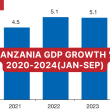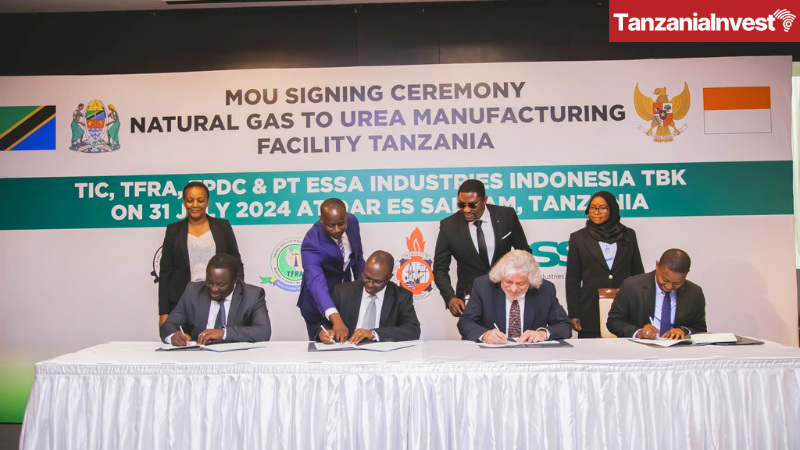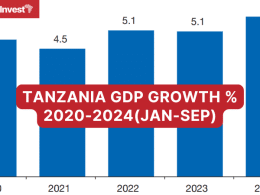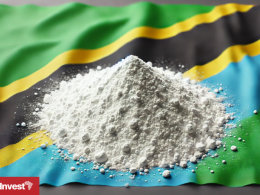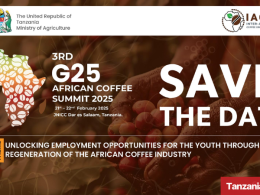Tanzania has entered into a landmark agreement with Indonesia’s ESSA Group to build a fertilizer plant worth TZS 3.5 trillion (approximately USD 1.4 billion) in the Lindi Region.
The Memorandum of Understanding (MoU) was signed on 31st July 2024 in Dar es Salaam, with key stakeholders including the Tanzania Petroleum Development Corporation (TPDC), the Tanzania Investment Centre (TIC), and the Tanzania Fertiliser Regulatory Authority (TFRA) in attendance.
The plant, to be located at the Likong’o-Mchinga site, will have an annual production capacity of 1.3 million tonnes of urea fertilizer. This capacity is expected to meet Tanzania’s domestic demand of 700,000 tonnes per year and provide excess for export.
The ESSA Group, a prominent player in the global fertilizer industry, will oversee the construction of the plant, which is expected to be completed within 36 months.
Prof Kitila Mkumbo, the Planning and Investments state minister in the President’s Office, emphasized the project’s importance during the signing ceremony, noting its potential to drive industrial growth and meet the country’s fertilizer needs.
Rahul Puri, an ESSA Group board member, expressed optimism about the project’s impact, highlighting that it will add value to Tanzania’s natural resources, boost agricultural growth, and improve livelihoods. He emphasized the goal of achieving price stability for fertilizer and enhancing food security.
Francis Mwakapalila, the TPDC acting director general, mentioned that the plant will initially require 70 million cubic feet of natural gas per year, with deliveries expected to start in 2027 and continue for 20 years.
Tanzania Fertilizer Demand
The fertilizer plant project was initiated following President Hassan’s state visit to Indonesia in January, where she encouraged Indonesian firms to invest in Tanzania.
Tanzania currently imports 90% of its fertilizer, costing approximately USD 400 million annually. The new plant is part of a broader strategy to industrialize the economy, reduce import dependency, and enhance agricultural productivity. The agricultural sector represents about 27% of Tanzania’s GDP and employs over 65% of the workforce.
The plant is projected to create over 5,000 direct and indirect jobs during its construction phase and around 3,500 permanent positions once operational. It will also spur the development of ancillary industries and infrastructure in the Lindi Region, potentially transforming it into a hub for industrial activity in southern Tanzania.
This initiative aims to significantly boost the country’s agricultural sector by leveraging its natural gas reserves to produce urea fertilizer.



